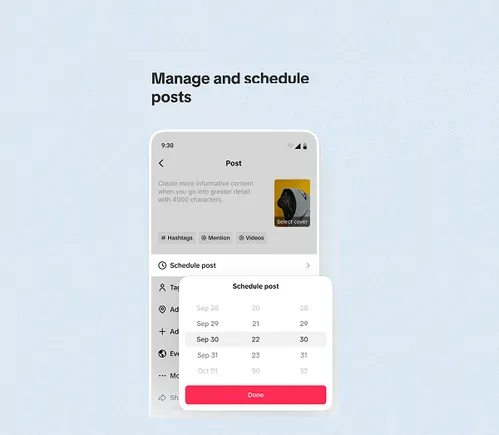How a mass layoff is managed can make or break a company, impacting everything from internal employee perceptions to external public image and, ultimately, the bottom line. There are myriad ways a company might experience the fallout—remaining employees may end up quitting, stock prices could go down, investors might pull out of future infusions, etc. However, a strategic and thoughtful approach to a mass layoff has the potential to lead to employee optimism and a more profitable outlook.
A Compassionate Approach
A large layoff tends to breed emotions of confusion, grief, anger and shock. Empathy and understanding go a long way to smooth an uncomfortable transition and limit public perceptions of mistreatment while showing employees the door. Impacted employees should be made aware that their service is appreciated, and termination decisions are based solely on the company’s current needs, not the employees’ performance or other personalized rationales. Keep in mind that surviving employees are grieving and will be observing how the departing employees are treated, what support is offered in the aftermath, and how their own roles and workload will be impacted with a now-smaller team.
Separation packages are common and considered a best practice in alleviating potential backlash if the company can afford the cost. Instead of defaulting to one to two weeks of pay per year of service, consider offering a base package plus an additional week for every year of service. The only way to know a company will not be sued by an employee is to have a signed and enforceable separation agreement, so consider that both as a goodwill gesture, to thank employees for their service and help them with their transition, and as a risk management measure. Other offerings might include allowing employees to participate in early retirement, providing access to career coaching or resume writing, or paying for their LinkedIn Premium for a period of time to help them find a new position.
Create a Road Map
When considering a mass layoff, there are a significant number of issues to decide in advance to ensure the most positive and successful outcome.
• Consider which decision makers will be involved in the process. Oftentimes, senior leaders need to make layoff decisions without consulting the team members whose groups may be highly impacted. While the decision to exclude certain people in the process is intentional, it can be beneficial to create a team with diverse experience in various organizational roles to gain different perspectives on current company culture and measure how the layoffs will be received. Having the right team on board may also help smooth the situation if trusted individuals relay an honest, straightforward message of economic hardship or reorganization to accommodate a changing product or client base.
Another point to consider is if the company requires board approval to remove key positions or conduct a mass layoff. Failure to comply with any internal requirements could result in problems for the decision-making team.
• Determine which employees or departments will be affected. This determination can be viewed through a variety of filters, such as looking at seniority, skills or specific positions and roles. Whatever method gets applied, there should be transparency about the selection criteria used in making the decision. Unionized companies should be aware of any existing collective bargaining agreements to ensure the layoff does not violate any terms.
Once the decision is made, look at the individuals to analyze whether any commonality exists. Does the majority of the departing group belong to a particular race, gender or age group? Are they mostly from a particular country? If any significant patterns show up in this impact review, there is greater risk of being accused of discrimination, which could lead to individual or class action lawsuits, as well as government complaints or audits. If an apparent commonality exists, consider a different selection method and/or if it makes sense to reassign or retrain some individuals.
• Create a detailed plan that outlines all the elements. An organized, strategic communications plan that outlines short- and long-term goals is imperative to mitigate the uncertainty of what may come and help the company survive. It is important to have a detailed consensus among appropriate leadership as to why the layoff is occurring, how it will happen, and the forward-looking plans for the company and its remaining employees.
Key points to map out include:
–Layoff timing and roll-out
–How the transition will occur
–Benefit packages to be offered, if any, and separation agreements
–Messaging to affected employees, remaining employees and the public
Designate a trusted company spokesperson to relay information and answer questions from employees, as well as from investors and the press, if needed. It is important to provide ample forums for questions and to provide the information in multiple formats—at least verbal and written. This might take place in small group or one-on-one meetings, explaining the reasons for the layoff, outlining what’s happening next, and providing relevant information on next steps for departing employee transitions, such as the last day of their employment and separation package terms.
Follow the Basics
Companies with 100 or more full- and/or part-time employees must comply with the federal WARN (Worker Adjustment and Retraining Notification) Act if any of these circumstances occur: 1) at least 50 people are laid off during a 30-day period and the laid off employees make up of at least one-third of the workforce; 2) 500 employees are laid off during a 30-day period, no matter how large the workforce; or 3) an entire work site is closed down and at least 50 employees are laid off during a 30-day period.
Under the WARN Act, companies are required to provide a 60-day notice that layoffs will occur to employees, the state (or entity designated by the state to receive such notice) and the chief elected official of the local government where the mass layoff will occur. Some states have their own WARN Acts or equivalent, so be sure to check for specific regional provisions that may affect the company’s obligations. Notice can be delivered by any reasonable method designed to ensure receipt (i.e., mail, personal service, email). If a company fails to provide adequate notice, it may be liable for employees’ back pay, medical expenses and retirement benefits during the covered period.
What’s Next?
Layoffs are not ideal, but they can be an opportunity for the company to reinvent itself. Ensuring a healthy workplace environment is critical to a business’s survival and engaging an experienced attorney early on can help guide leadership though innumerable layoff risks and repercussions while also setting the company up for future success. A business-savvy legal counselor will be able to advise on ways to foster an inclusive company culture and identify/address areas for improvement or those that precipitated the layoff.








































































